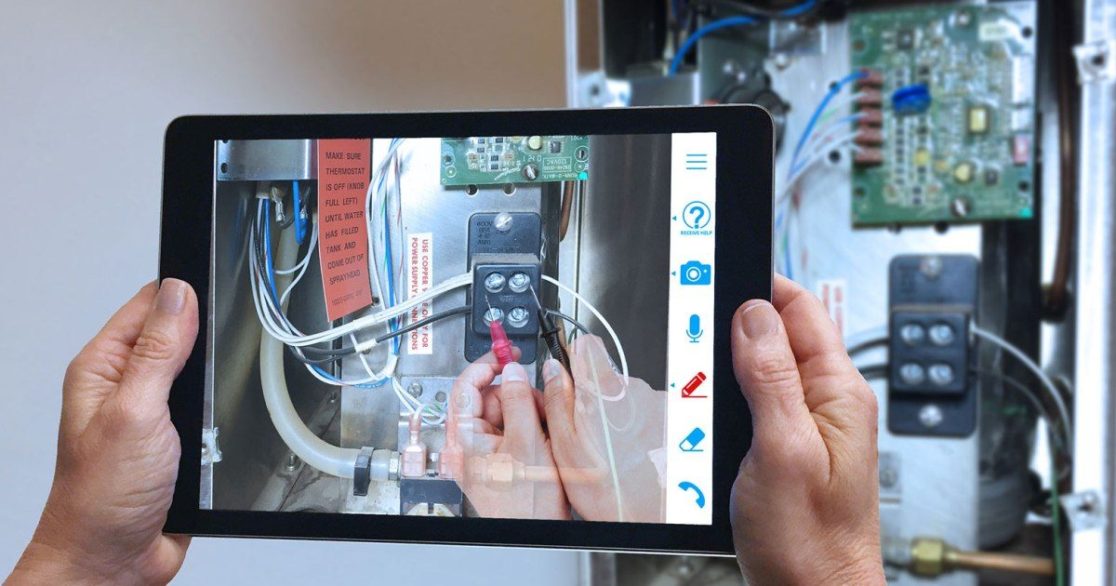Remote maintenance hasn’t taken full flight in the commercial aviation sector despite offering significant process, workforce and business efficiencies. Bizarrely however, even though it has grounded most passenger aircraft, the current COVID-19 crisis might actually become the catalyst for truly compliant remote maintenance practices.
Remote MRO poised for lift off
Airlines and MROs of course see the benefit of moving towards more mobile and paperless operations, but there have always been technology and regulatory hurdles standing in their way. Yet COVID-19 has forced aviation organizations and regulators to look at ways to meet social distancing and remote working conditions. The Federal Aviation Administration (FAA) announced a policy at the end of March which will allow video links and other remote technology to help conduct inspections and validate regulatory compliance during this period of uncertainty.
Other encouraging digital breakthroughs are also emerging. Witness Airbus ‘e-delivering’ three A320neo family aircraft to Turkish low-cost carrier Pegasus Airlines—through a three-step delivery approach which integrates the required health & safety standards for COVID-19.

Circumnavigating the paper jam
Relying on paper-based processes means that anything which causes a disruption to “business as usual” will exponentially impact labor efficiency—an incorrect or missing part, for example, requires a mechanic to leave the floor and talk to someone about how to resolve. Time is lost, no work is being done.
But when maintenance planning, labor, part and tool scheduling are all paper free, if changes occur, there is no paper to print, shuffle or re-distribute. All stakeholders can immediately see their new assignments as planners push job cards out direct to a mechanic’s device. Because this is a digital process, as work progresses, data from those cards is immediately available to planners and supervisors. The result is real-time visibility into status of and progress against a plan.
Remote maintenance support at the touch of a button
This paperless collaboration can be taken a step further given the new FAA remote maintenance guidelines to reduce resource burdens now and into a post-COVID-19 future. With the proliferation of smart devices and maintenance software applications available on mobile, the result is merged reality—when the real and virtual world are mixed and objects from both can interact—is becoming more and more of an option for task instruction and sign-off.
That is why we are seeing some businesses taking up IFS Remote Assistance, a tool that allows team members to collaborate over distances, see information in a common view, and share information in context of that common view.
This is a tool purpose-built for remote collaboration and is a part of our long-term product strategy to provide our customers with what we call an application service. Application services are capabilities that we add to our portfolio to support many different business contexts across the industries we serve. We have recently begun to offer remote assistance across some of the target industries we support—one of the first companies to recognize its value was in the service industry.

Cross-industry lessons being applied to aircraft maintenance
Global climate control solutions provider, Munters, identified the effects of the coronavirus pandemic early and was quick to roll out remote assistance to ensure continuity in customer service, manufacturing operations and servitization efforts. Two weeks later, 200 staff across 22 countries were benefiting from the technology.
Of course, many aspects of aircraft maintenance have analogies to the broader service industry, and recently discussions have begun with some of our airline customers about the use of this capability. We have updated the IFS product roadmap to reflect the inclusion of IFS Remote Assistance into our user experience for airlines.
Merged reality makes the future of MRO clear
We are currently working with our customers to determine where mixed reality technology can help in the current circumstances. There are clear benefits to be had in any complex troubleshooting activity where advice is sought from the Maintenance Operations Control Center by a technician working at the aircraft. We have also seen the potential for improving how independent inspections are performed.
As COVID-19 increases the need for social distancing, these tools for remote MRO collaboration could help adapt workflows to compensate now and pave the way for the aircraft maintenance of the future.
Learn more about how IFS Remote Assistance can help remote experts support customers, technicians or experts from anywhere, instantly.
Do you have questions or comments?
We’d love to hear them so please leave us a message below.
Follow us on social media for the latest blog posts, industry and IFS news!
mnrtsdi mnr
nice article , thanks for sharing with us